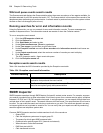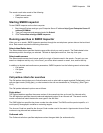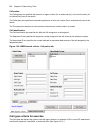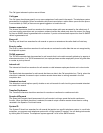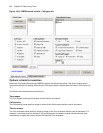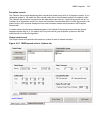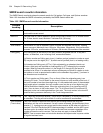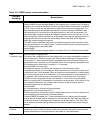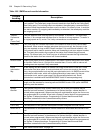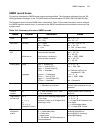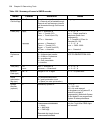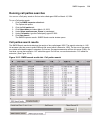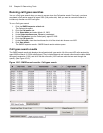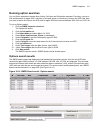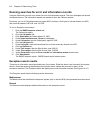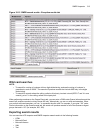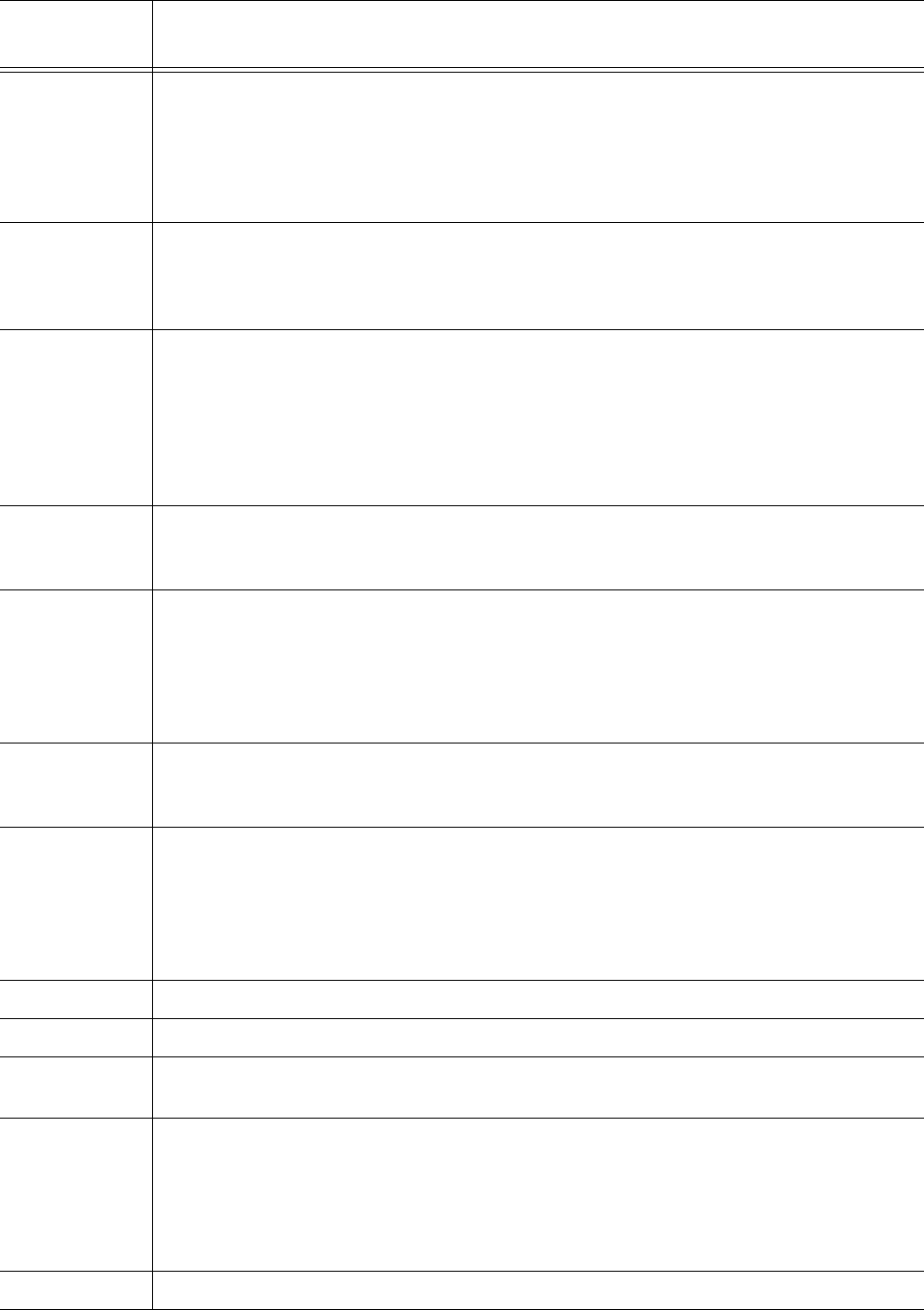
306 Chapter 10 Data-mining Tools
Called party A Called party can be a station number, an attendant, or for outgoing calls, the outgoing
trunk number. The Called party output format is identical to that used for the Calling party.
See Calling party. For incoming calls to an attendant, the called party is recorded as the
attendant unless the attendant transfers a call to a station. For direct-in-lines, it would be
the station number. On outgoing calls handled by an attendant, the called party would be
the outgoing trunk’s ID.
Transfer/
Conference
call
(Trans Conf)
This box identifies calls involving three or more parties. It contains a T for supervised
transfers, X for unsupervised transfers (that is, transfer in to busy reports a T, transfer in
to ringing reports an X), and a C for 3-way conversations or conferences.
Third party The Third party box contains the number of the station to which a trunk call has been
transferred. When several transfers take place during a trunk call, the first party is the
only one reported, as long as MCD Report transfers = No, and Record transfers = No.
If an external call is made to a station whose call forwarding is set to an external number,
the Third party box contains the number of the station that initiated the call forward
feature. For internal calls, the Third Party box is left blank because the Digit dialed box
identifies the station that has external call forward enabled.
Account Code Enabling the report Account Codes option in the SMDR Options Assignment form allows
an Account Code of two to 12 digits to be recorded here, if one is used to make a call.
Leading zeros are reported if they are entered.
Route
optimization
flag
At the starting and end nodes of a network call a flag will be shown in this box if route
optimization has taken place. A route optimized call involves two trunks to the same
party: the pre-optimization trunk and the post-optimization trunk. An SMDR record will be
produced for both trunks, which will be distinguished by a lower case r for the pre-
optimization trunk, and an upper case R for the post-optimization trunk. Route
optimization is available with the MSDN/DPNSS Voice IV feature package only.
ANI/DNIS ANI/DNIS digits are recorded in this box. ANI and DINS numbers can be up to 10 digits in
length, and are recorded for incoming calls on ANI/DNIS trunks. COS option ANI/DNIS
reporting must be enabled.
System
identifier
This optional 3-digit box may contain values from 000 to 999. 000 indicates that no
identifier has been entered. In the absence of a System identifier, a Node identifier is
printed (when programmed). When more than one node identifier exists, the first one on
the programmed list is printed. When both a System ID and a Node ID are programmed,
the System ID takes precedence. Programming of System Identifiers and Node
Identifiers is described in the Customer data entry volume.
Call ID The Call ID box specifies the call number to which the record relates.
Call ID seq The Sequence ID box specifies the sequence number assigned to the call record.
Assoc call ID The Associated ID box specifies the number attached to associated data records of the
call.
System ID This optional 3-digit box may contain values from 000 to 999. 000 indicates that no
identifier has been entered. In the absence of a System identifier, a Node identifier is
printed (when programmed). When more than one node identifier exists, the first one on
the programmed list is printed. When both a System ID and a Node ID are programmed,
the System ID takes precedence. Programming of System Identifiers and Node
Identifiers is described in the Customer data entry volume.
Record See “SMDR record boxes” on page 307.
Table 10-5 SMDR search results information
Column
heading
Description



